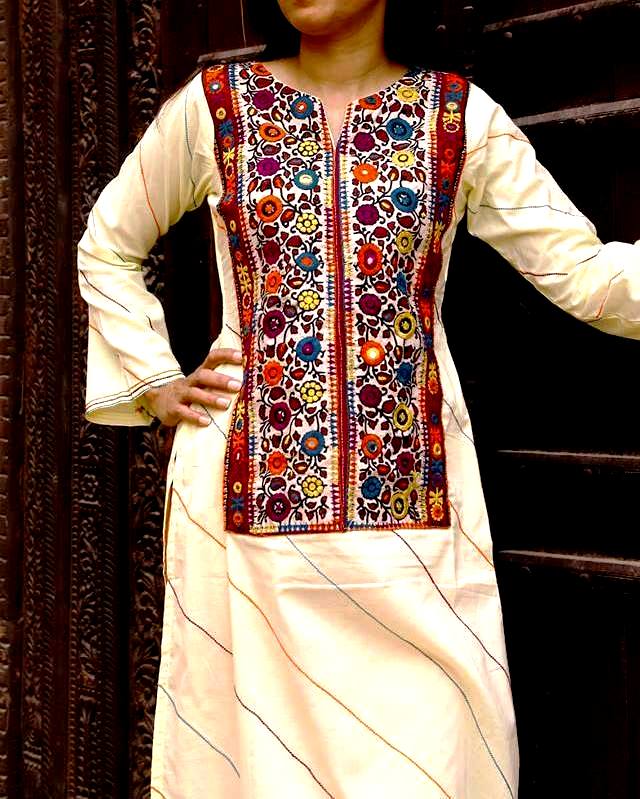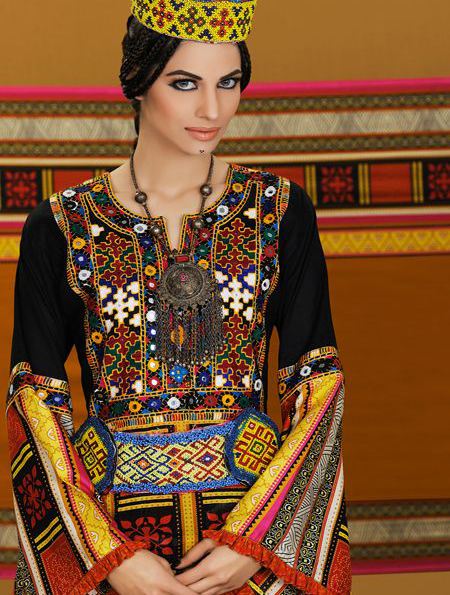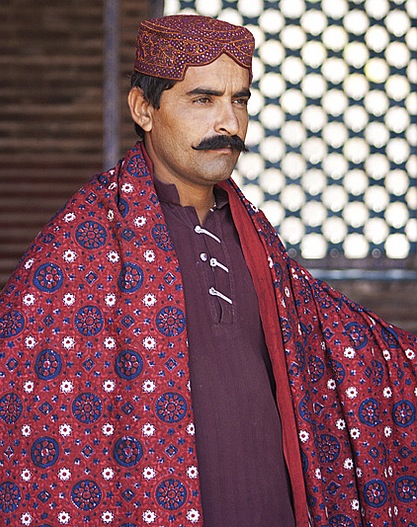PAKISTANI CLOTHES
Shalwar kameez is a traditional outfit originating in South Asia. It is a generic term used to describe different styles of dress. The shalwar kameez can be worn by both men and women, but styles differ by gender. The shalwar (pantaloons/drawers) and the kameez (body shirt) are two garments combined to form the shalwar kameez. The kameez can be sewn straight and flat, in an "A" shape design or flowing like a dress: there are a variety of styles. Modern kameez styles are more likely to have European-inspired set-in sleeves. If the tailor's taste or skill are displayed, it will be seen in the shape of the neckline and the decoration of the kameez. The kameez may be cut with a deep neckline, sewn in diaphanous fabrics, or styled in cap-sleeve or sleeveless designs. There are many styles of shalwar: the Peshawari shalwar, Balochi shalwar, Sindhi choreno and the Punjabi shalwar. Although various regions of South Asia wear the outfit in its various forms, the outfit was originally popular on a wide scale in Afghanistan, Khyber Pakhtunkhwa, Balochistan and the Punjab region of Pakistan and India. However, the shalwar kameez has now become popular across South Asia.
Punjabi Shalwar Suits
The traditional shalwar kameez worn in the Punjab region is cut differently to the styles worn in Balochistan and Afghanistan and is known as a "Punjabi suit" with the kameez being cut straight and flat with side slits (which is a local development as earlier forms of kameez did not have side slits). The shalwar is wide at the top but fits closely to the legs and is gathered at the ankles. The Punjabi shalwar is also cut straight and gathered at the ankles with a loose band reinforced with coarse material. In rural Punjab, the shalwar is still called the suthan which is a different garment that was popular in previous centuries,alongside the churidar and kameez combination (which is still popular). In Britain, South Asian women from the Punjab region have brought the dress to the mainstream, and even high-fashion, appeal. The Punjabi suit is popular in other regions of South Asia, such as Mumbai and Sindh. Punjabi suits are also popular among young women in Bangladesh and are especially popular amongst school girls in India. The outfit is also popular in Afghanistan, where it is called the Punjabi.

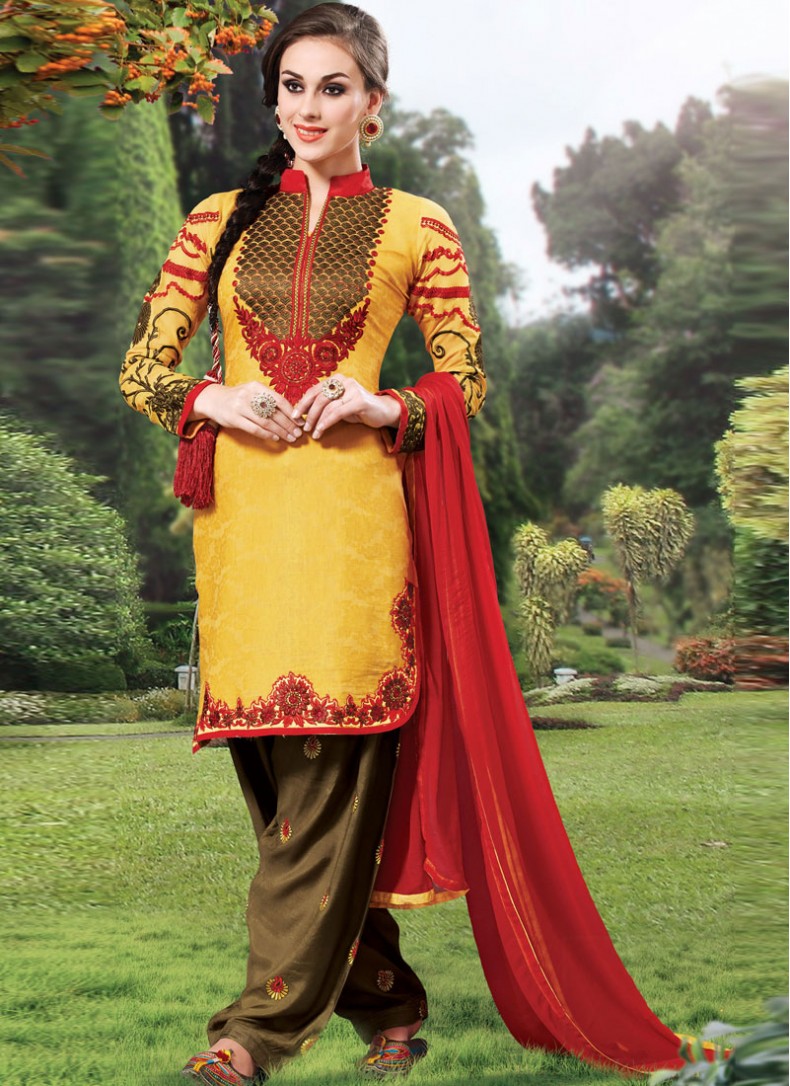



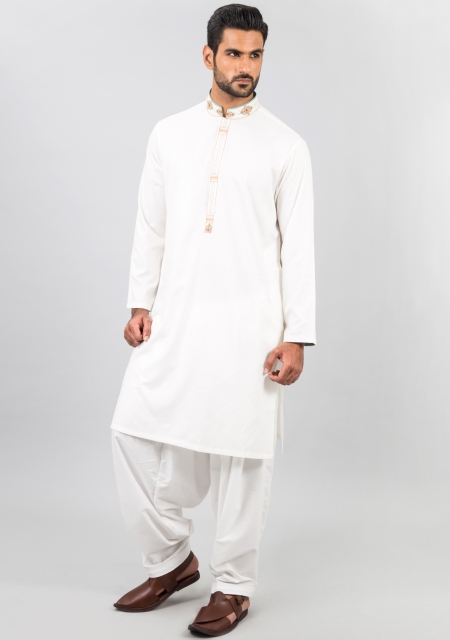
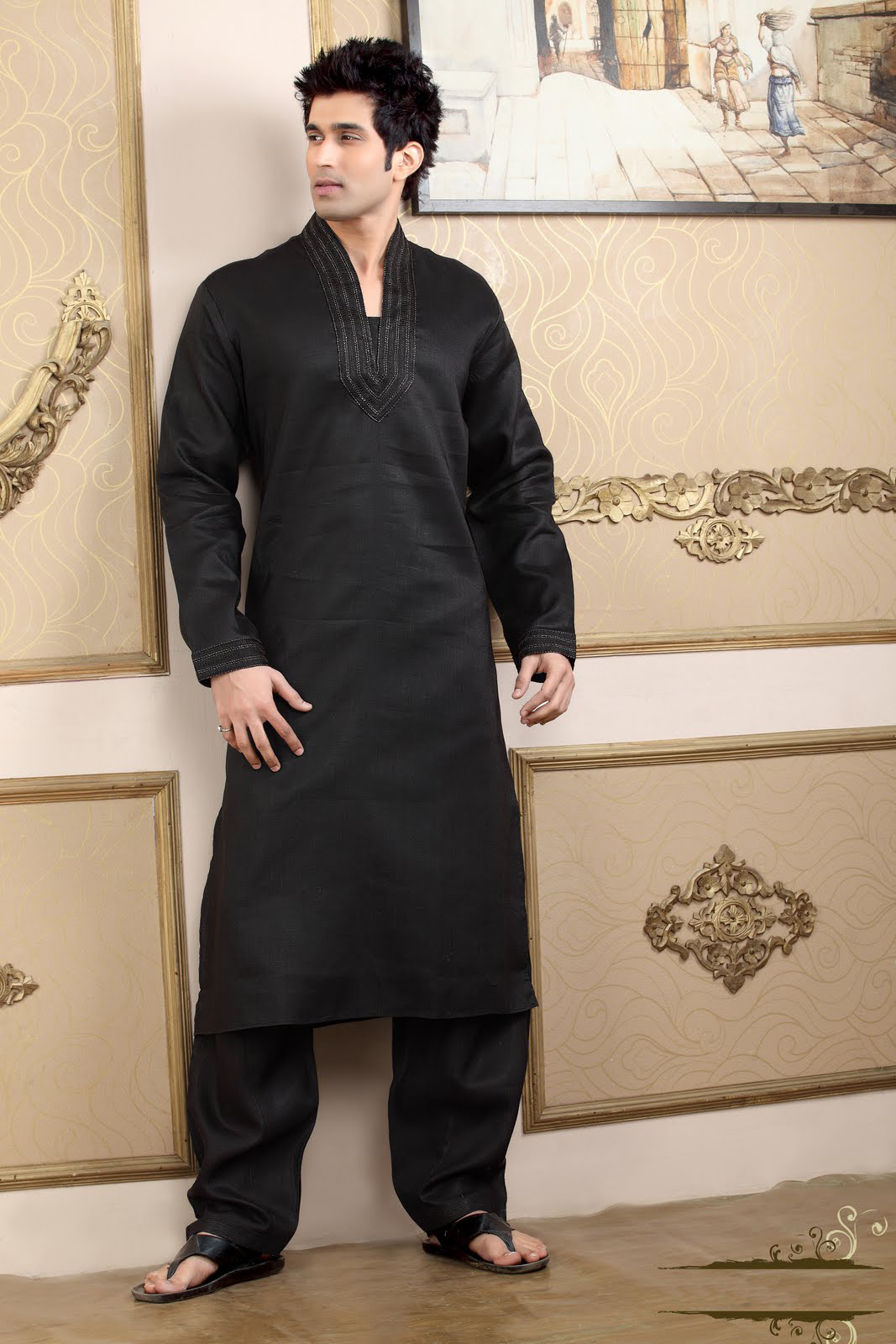

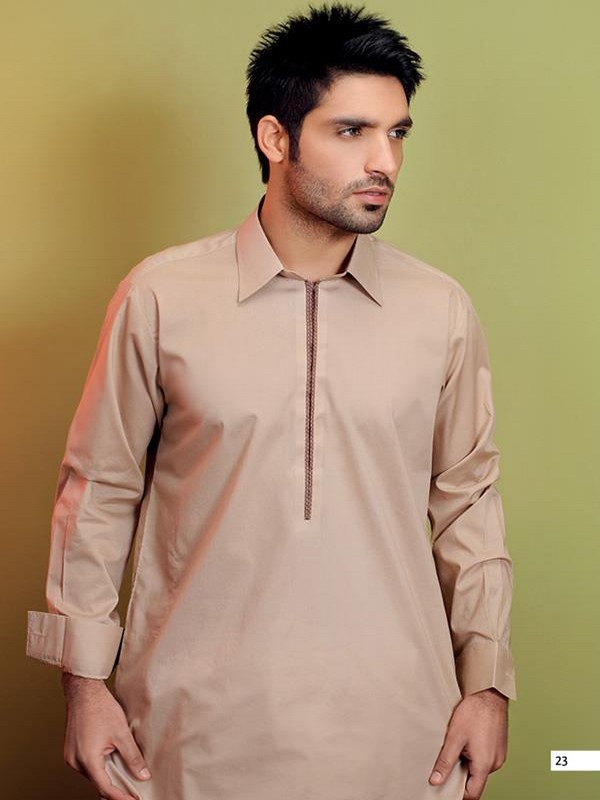
Balochi Shalwar Suits
The clothing of Balochistan, Pakistan includes the shalwar kameez which when worn by males consists of a very baggy shalwar using large lengths of cloth. The kameez is also loose, which traditionally is long with long sleeves The Balochi shalwar kameez is similar to the styles worn in Afghanistan. The present Balochi shalwar kameez replaced the earlier version which consisted of a robe to the ankles and a shalwar using cloth of up to 40 yards.
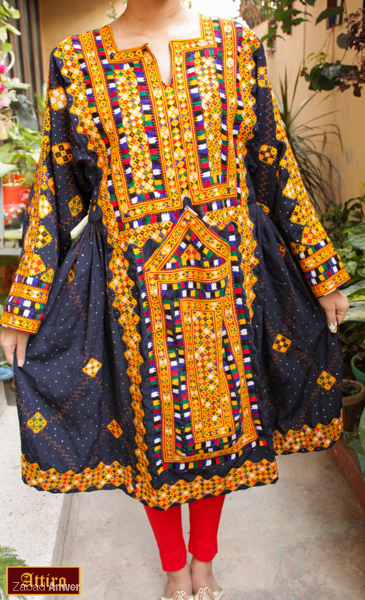








Pashtun Shalwar Suits
As a chiefly rural and nomadic population, the Pashtun dress is typically made from light linens, and are loose fitting for ease of movement. The Pashtun dress includes local forms of the shalwar kameez, which are differently made for males and females. The traditional male dress includes the Khet partug and Perahan wa tunban. Males usually wear kufi, Peshawari cap, turban, sindhi cap or pakul as traditional headgear. The traditional female dress is the Firaq partug. Women typically wear solid-coloured trousers, a long kamīs shirt with a belt. Sometimes they will wear an encompassing burqa over this outfit or a tsādar on their head.


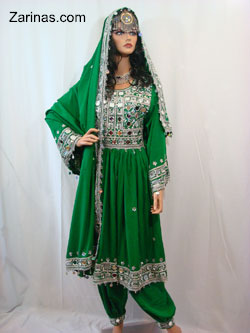
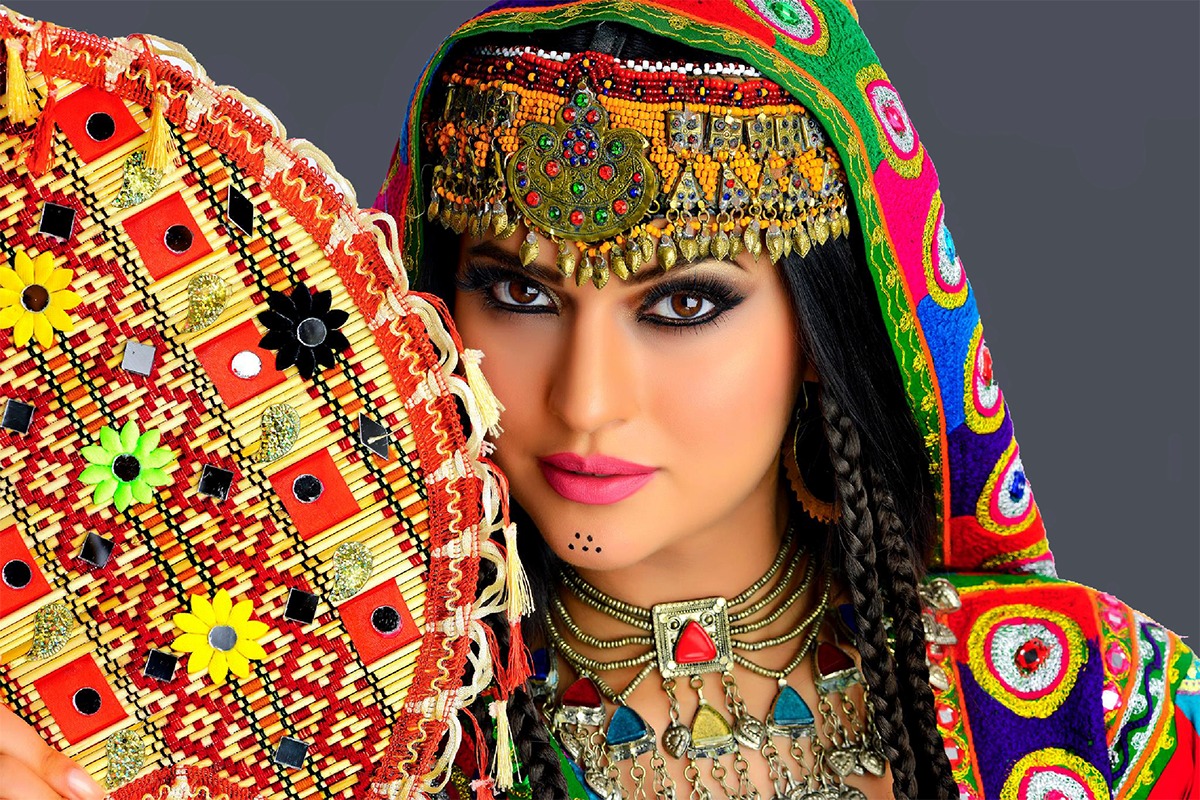
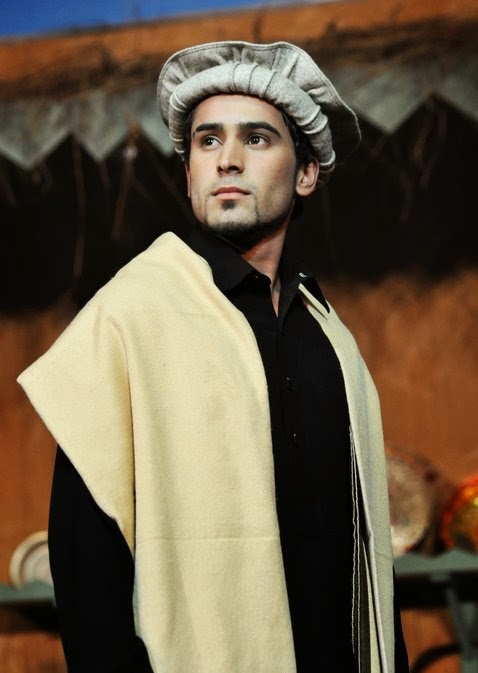
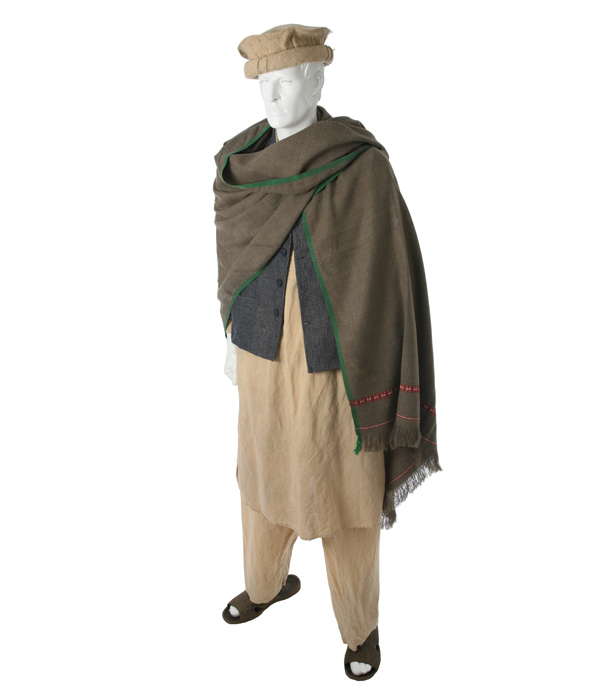
Sindhi Shalwar Suits
Sindhi women wear the Shalwar kameez or the sari and the men wear the shalwar kameez or the kurta with pyjamma. However, before the adoption of the Shalwar kameez, the sari and the kurta, Sindhis had their own traditional costumes.


